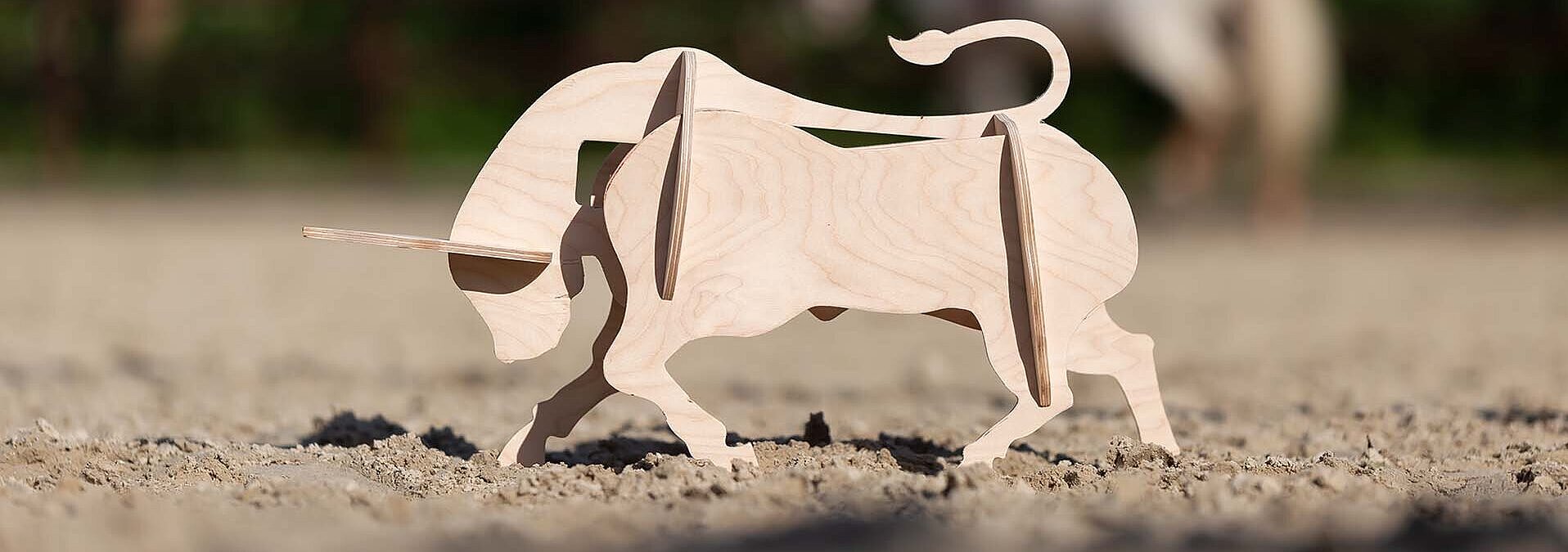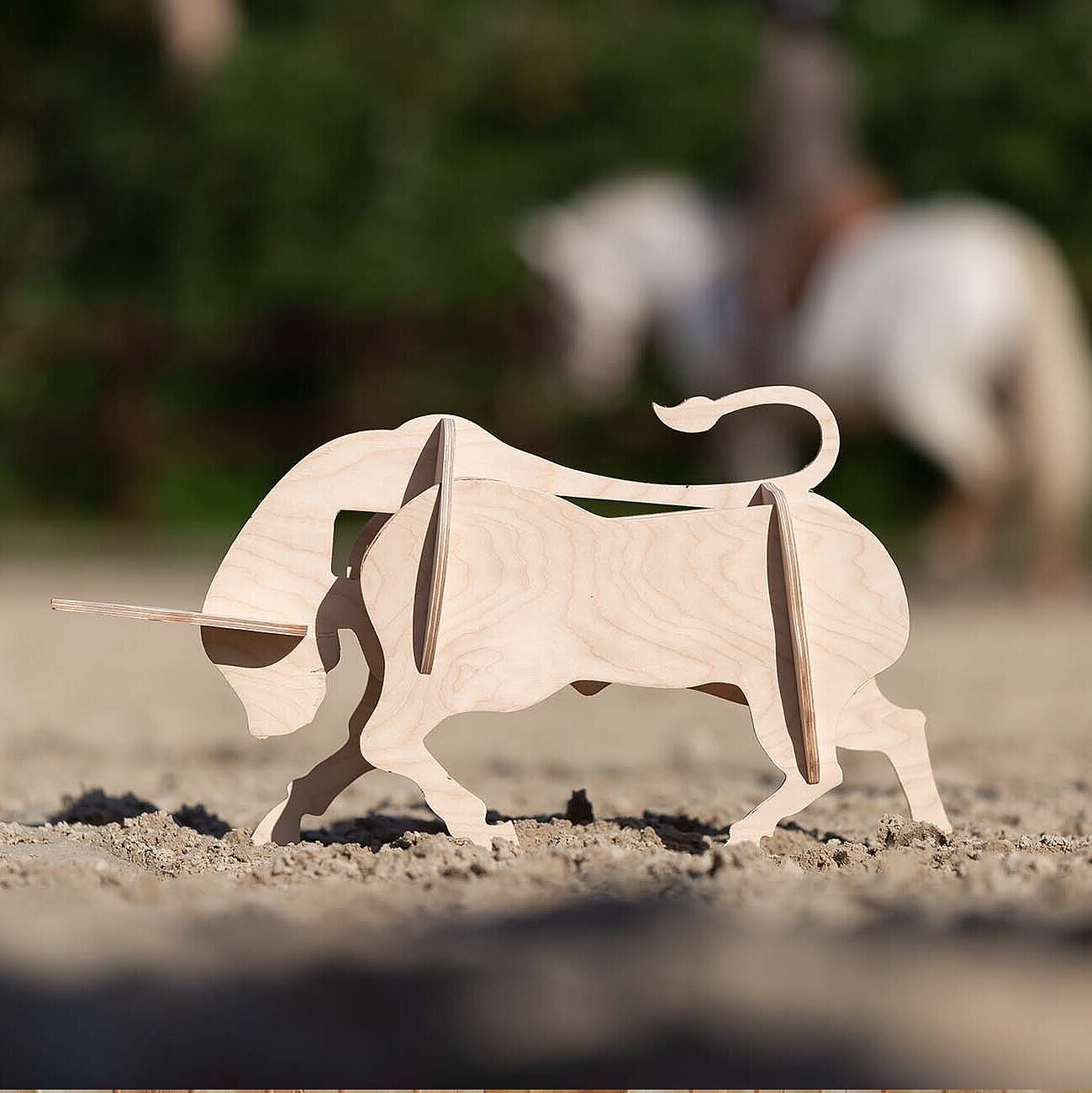The fascination of Working Equitation
What has been known for many years in southern European countries as "Equitacao de Trabalho", "Doma de Trabajo" and "Monta de Lavoro" has also been gaining more and more fans in Germany in recent years. This young equestrian discipline is now on everyone's lips under the name "Working Equitation", which was previously used more in Great Britain. But what is working equitation anyway?
What is Working Equitation?
Where does the riding style come from? Working Equitation is not a type of riding or riding style in a special sense - Working Equitation is rather a young competition sport discipline that has developed from the tradition of southern European working riding styles. Spain with the Doma Vaquera, the Vaqueros and their PRE, Portugal with its Lusitanos, France with the Gardiens and their Camargue horses and the Butteri from Italy with their Murgesen are the countries of origin of European working riding styles, from which Western riding also developed a long time ago.
The competition discipline arose from the desire to preserve the traditional southern European working riding styles and to make them known beyond their borders. The various national working equitation disciplines can compete with each other through a common set of rules in the Working Equitation competition discipline and at the same time carry on their traditions.
What do you need for Working Equitation?
But working is more than just a competition discipline - it is the love of training a courageous partner with whom any obstacle can be overcome with seemingly effortless elegance and precision.
The starting point is the horse and rider - regardless of breed or level of training. By training according to the classic points of the training scale, the rider gets a well-ridden, willing and collected, but also manoeuvrable horse. Training and testing takes place in 4 disciplines.
Which disciplines and examinations does the WE include?
Working Equitation consists of 4 sub-disciplines: The dressage, the dressage trail, the speed trail and the cattle work.
Dressage is the basis for all requirements in the other sub-disciplines and gradually progresses from the beginner class to the single-handed master class. It promotes rideability, gymnasticises the horse and includes all the lessons for the manoeuvres required later in the trail and on the cattle.
The obstacles in the trail course are based on the tasks of a cattle herder in the open field. Typical obstacles include opening and closing a gate, crossing a bridge or riding through a pen. The dressage trail is the combination of dressage with the requirements of the individual obstacles and is therefore also known as the dressage trail.
In the speed trail, horse and rider complete a similar course to the dressage trail. This time, however, it is all about speed and a fault-free ride. In the speed trail, the rider receives penalty seconds for a fault, but can also collect bonus seconds at other obstacles.
The supreme discipline is cattle work - it is intended to be reminiscent of the work of cattle herders on the campos, for example how to separate individual cattle from a herd in order to vaccinate them. In terms of the competition discipline, cattle work is ridden nationally as an individual competition and internationally in teams. When working cattle, it's not just about riding skills, but also about the right tactics and reading the herd of cattle.
What tasks are there in Working?
The tasks in Working Equitation are based on those of a cattle herder in the Campos. They are varied and range from classical dressage lessons to dynamic manoeuvres in the trail and a high level of responsiveness to the cattle. The training of various obstacles gives meaning to the basic training in dressage, which motivates many horse-rider pairs and trains the fine aids even in tight manoeuvres and difficult lessons. Based on the origins of the working riding style, riding takes place in walk and canter and less in trot.
What performance classes are there?
The performance classes or WE classes in Working Equitation are based on those of the FN: E class, A class, L class, M class, S class or Master class. A special feature of the advanced class, S class or master class is one-handed riding on a bare bit. Naturally, the requirements gradually increase from the easy class to the beginner class and higher classes.
Who is Working Equitation suitable for?
The prerequisites for Working Equitation are a horse and a rider. There are no Working Equitation requirements in the narrower sense. Working Equitation as a competition discipline is committed to openness and diversity. It enables riders to present their national working riding style. This is reflected in the stylish presentation of horse and rider, as well as the wide variety of breeds that make this discipline so fascinating.
Who makes the regulations?
Working in Germany is organised nationally by the WED, the "Working Equitation Deutschland e.V." association. Internationally, it is organised by the WAWE or, depending on the responsibility within the individual European countries, the FITE.
The German Working Equitation Association (WED e.V.) sets the national rules and regulates special requirements such as the Working Equitation cattle licence, which stand for a fair sport for animals and humans. The German Working Equitation Association offers interested parties and members a lot more information about the sport, licensed trainers and seminars, regional groups and working equitation competitions.
Which saddle for Working Equitation?
Parallel to the development of the southern European working riding styles and the horse breeds typical of these countries, characteristic working saddles such as the Vaquero saddle, Camargue saddle or the Portugesa have also developed. In keeping with the basic idea of working equitation, it is appreciated when a horse and rider pair present themselves in a stylish saddle with matching bridle and costume. Styles should not be mixed.
As different as these working saddles may look at first glance, what they all had in common was a large contact surface for the horse. Only with a large pressure distribution that was gentle on the horse's back was it possible for the cattle herdsmen to spend many hours a day travelling with their horses without impairing them.
At SIGNUM, we have made the large contact surface the central element of our saddle concept, thereby consciously preserving the advantages of traditional working saddles. As many traditional working saddles do not meet the requirements of a modern and customised saddle, it has been combined with an innovative saddle concept. Today, we at SIGNUM can offer you a variety of saddles as large as the variety in Working Equitation itself. Customised saddle OMEGA Worker, OMEGA Vario Classic, OMEGA Rose - Ready-made saddle OMEGA El Torro
Which show outfit for Working Equitation?
The model of stylish equipment also applies to the rider. This is both elegant and functional in accordance with the requirements of a working riding style. Every element of the equipment has a meaning and purpose for daily work. Unnecessary jewellery, filigree decorations or even glittering ornamental parts would be out of place here.
The riders' outfits are based on clothing and equipment in muted colours. A long-sleeved shirt with waistcoat for the rider is combined with a neckerchief or tie, plain riding breeches and boots. You can find stylish and fairly produced working equitation clothing from Vorreiter in our shop - click here to view the collection.
What kind of competitions are there in Working Equitation?
There are various competition formats in Working. Depending on the classes advertised, with or without cattle work. For some years now, the number of starters in championships and championships such as the German Championships, the European Working Equitation Championships and the World Championships has also been growing.
What connects us at SIGNUM with Working: Stefan Baumgartner's passion for the Iberian Peninsula not only led him to design our saddles, but also brought Working Equitation to Germany. As co-founder of the Working Equitation scene in Germany, Stefan Baumgartner and our team presented Working Equitation at many trade fairs and events and organised one of the first Working Equitation competitions in Germany in 2008. In addition to Stefan Baumgartner, the pioneers of the early years also included: Rolf Janzen, Roland Heiß, Gernot Weber and Roland Kunze.
At the beginning, nobody would have dreamed how widespread Working would become. We are particularly proud that "our boys" Gernot Weber, Thomas Türmer and Mitja Hinzpeter have been among Germany's most successful Working Equitation riders for years. Together with Mitja Hinzpeter, Thomas Türmer, Mirjam Wittmann and national coach Nuno Avelar, our boss Gernot Weber was part of the German team at the 2018 Working Equitation World Championships. The Working Equitation summer fairytale came true when the team won the team gold medal in the overall classification and the cattle work.

